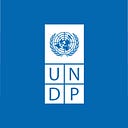UNDP promotes resilience in earthquake-prone Nepal

The 2015 earthquake in Nepal caused massive destruction to almost a million houses, and made more than 900,000 families homeless. The cost of rebuilding has the potential to be crippling, especially when considering the need to make the new structures more resilient.

“I did not want to drown myself in debt, hence I decided to build with traditional technology using local and salvage materials. You don’t need to use new, more expensive technologies as you can find ways to make traditional methods safer. But to do this, you need the right guidance at the right time, which is why I am grateful for the support given by the mobile masons and engineers from the Nepal Housing Reconstruction Project,” says Sukdev Sarki.
The owner-driven reconstruction approach adopted by the National Reconstruction Authority, places the responsibility of rebuilding on home owners and communities, but can be slow. Considering this reality, UNDP, with support from the Government of India, launched the Nepal Housing Reconstruction Project in March 2018 to help more than 26,000 house owners rebuild in Gorkha, the epicentre of the earthquake. In a similar initiative funded by European Civil Protection and Humanitarian Aid Operations (ECHO), UNDP is supporting another 11,000 households in Sindhupalchowk and Dolakha.

UNDP has been able to expedite the massive reconstruction process. A core focus has been on building back better and ensuring each aspect of reconstruction considers risk, from the resilience of housing structure to future shocks, to the risks faced during the building process itself.
Experience has taught us that community participation is critical to recovery. Through street theatre, people are sharing knowledge and information on safer reconstruction methods in an engaging way.
Mobile vans equipped with video and communication materials have been traversing remote areas to disseminate information to home owners on safer construction technologies and how to get government grants.
“The video van has brought awareness on how to rebuild safely while using traditional technology to our doorstep,” says Dinesh Raman Khanal.

Overcoming administrative barriers
Houseowners also need help getting grants disbursed in three tranches from banks. The project worked closely with homeowners and local governments to develop efficient processes, with 80 trained masons and 18 community facilitators engaged to help more than 12,000 people rebuild their homes.
Bishnu Maya Sarki, 70, says “I lived alone before the earthquake and when my house collapsed, I had no means of rebuilding it myself. The project mobilized support from my community who provided salvaged materials, labour contribution and oversaw reconstruction of my house. I am proud that very soon I will be the owner of a safe house.”
The project facilitated community consultations and surveys to identify those who needed special support like Bishnu Maya Sarki, and the disabled, single mothers, elderly, or orphaned. These consultations led to communities supporting over 4,000 households to ensure that no one was left behind.

Making additional efforts to reach the vulnerable and ensure their participation really made a difference. Laxmi Basnet, 49, had lost all hopes after the earthquake and moved to a rented room with her son in Kathmandu, where she was until contacted by the project team.
“I don’t know how long I would have been struggling with the hectic living in a city like Kathmandu for my basic survival, being homeless. I consider myself lucky that NHRP Gorkha team reached out to me on time and helped me reconstruct my home within three months,” she says.
Since government grants only covered part of the reconstruction costs, more than 70 percent of house owners borrowed from informal lenders at exorbitant interest rates. Owners needed cost-effective technologies for building with their traditional materials. The project collaborated with experts to develop a cost-effective earthquake resistant technology using galvanized iron, which is cheaper and easier to transport than cement.
Owners prefer to work with masons they are familiar with, and not necessarily those who are newly trained. Recognizing the traditional ties, the project has trained 1,600 masons employed by the owners on their own sites.
With increasing number of men leaving villages in search of better opportunities, more women are being trained as masons.

Samjhana Sunar rebuilt her house and others in her community. She is happy that more women are taking up masonry, a traditional domain of men.
“Initially it was quite hard to grasp the technicalities of masonry, but slowly with practice, I learned new things through the training. The support of my family and my community has also encouraged me to continue this work,” she says.

“No matter how large the reconstruction programme is, we need to ensure that it is designed keeping people at the centre. The owner-driven reconstruction process ensures that the local communities’ capacities are strengthened, and their support is mobilized for the poorest and needy families. This is helping us in our mission to ensure that the most vulnerable are not left behind in reconstruction efforts and do not fall back into poverty,” says UNDP Deputy Resident Representative Ayshanie Medagangoda Labé.

Story and photos by UNDP Nepal.
